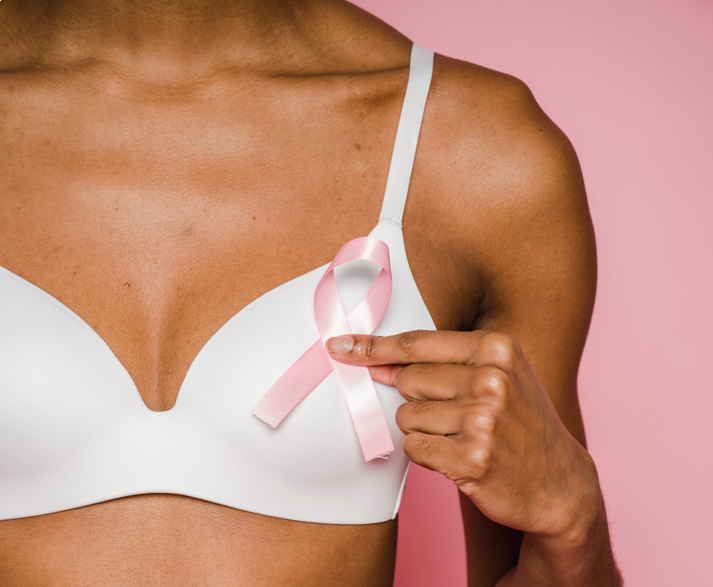Let’s support Breast Cancer Awareness Month
October is Breast Cancer Awareness Month and gives us the opportunity to understand more about this disease, its symptoms and treatment.

It’s also about supporting people affected by breast cancer. As it’s the most common cancer diagnosed in women, many of us know someone who is being, or has been, treated for the disease.
In this post, we’ll find out more about breast cancer in Australia and how you can show your support this October.
About breast cancer
Breast cancer occurs when the cells that line the breast lobules or ducts grow uncontrollably.
The cancer may be confined to the breast or may spread to other parts of the body.
Both women and men can get breast cancer, although it is rare in males.
Here are some statistics to help you understand more about breast cancer:
- One in 11 women will be diagnosed with breast cancer before the age of 75.
- It’s the second most commonly diagnosed cancer in Australia.
- About 80% of breast cancer cases are diagnosed in women over the age of 50.
- The overall five-year survival rate for breast cancer in females in Australia is 91%.
- Breast cancer diagnosis has increased by 33% in the last 10 years.
- In 2022, it is estimated that over 3,200 Australians will die from breast cancer
(Sources: Breast Cancer Australia, Cancer Council and National Breast Cancer Foundation)
Spotting the signs of breast cancer
One of the aims of Breast Cancer Awareness Month is to remind people of the signs of breast cancer. That’s because the sooner breast cancer is detected, the greater the chances of survival.

Check your breasts regularly for any changes. You can do this by looking at your breasts in the mirror with your arms by your side and also with them raised.
You should also feel each breast and armpit up to the collarbone.
Here’s what you should look out for:
- Changes in the size or shape of your breast
- Changes to the skin on your breast — for example, dimpling, a rash or redness
- Swelling or thickening in your breast or armpit
- Fluid coming from either of your nipples
- Any changes in your nipples — for example, being pulled inwards
- A rash, itchy skin or redness around the nipple
- Discomfort or pain in your breast (although this is a rare symptom of breast cancer)
If you find any of these changes or are worried about breast cancer, go and see your GP without delay.
They will examine you and may order tests such as mammogram, biopsy and ultrasound to confirm diagnosis of breast cancer.
Breast cancer screening is another important way of detecting cancer in its early stages and increasing survival rates. All women in Australia aged between 50 and 74 years are invited to have a mammogram every two years.
Breast cancer treatment
If you are diagnosed with breast cancer, your treatment plan will depend on the stage your cancer is at.
The main treatments for breast cancer are:
- Surgery: This may involve removing the breast and lymph nodes under the arm. Removal of the whole breast is called mastectomy, while removal of part of the breast is referred to as breast-conserving surgery or lumpectomy. You may be offered breast reconstruction surgery after your procedure.
- Radiation therapy or radiotherapy: This is commonly used after breast-conserving surgery to destroy any remaining cancer cells.
- Chemotherapy: This may be used to shrink the tumour before surgery, if cancer returns after surgery or radiation therapy or if it does not respond after hormone therapy.
- Hormone therapy: This is given to reduce the level of female hormones in the body to slow or stop the growth of hormone receptor-positive cancer cells.
- Targeted therapy: This kind of therapy is aimed at targets inside cancer cells and is used for HER2-positive breast cancer.
- Palliative care: This is about improving the quality of life by helping with the symptoms of cancer and slowing the spread of the disease.
Breast Cancer Awareness Month in Australia
Breast Cancer Awareness Month is the ideal time to know more about this disease and share this information with family and friends.
You can also show your support this October for breast cancer awareness by:
- Donating to breast cancer research and facilities to help improve treatments and save lives
- Organising a sponsored event such as a fun run or coffee morning to raise funds and awareness
- Making an appointment to have a mammogram if you are eligible and encouraging friends and family to do the same
- Reaching out to someone you know who is going through treatment for breast cancer
- Wearing a breast cancer wristband to spread awareness — you can order pre-printed or customised breast cancer awareness bracelets for yourself or someone who is undergoing treatment
You may also want to purchase an axillary lymph nodes medical ID. This is a medical alert that advises that axillary lymph nodes have been removed as part of breast cancer treatment and warns that blood pressure readings or needles should not be taken in the affected arm.
Know more about breast cancer
The good news is that survival rates for breast cancer in Australia are continuing to improve. Now 89 out of every 100 women diagnosed with invasive breast cancer are surviving five years or more beyond diagnosis (source: Cancer Australia).
And it’s easy to show your support this Breast Cancer Awareness Month. Even by reading this article, you have done your bit to inform yourself about the disease!
Find out more about our full range of medical alert bracelets here. With great customer service and swift delivery throughout Australia, it’s an easy way to show your support.

